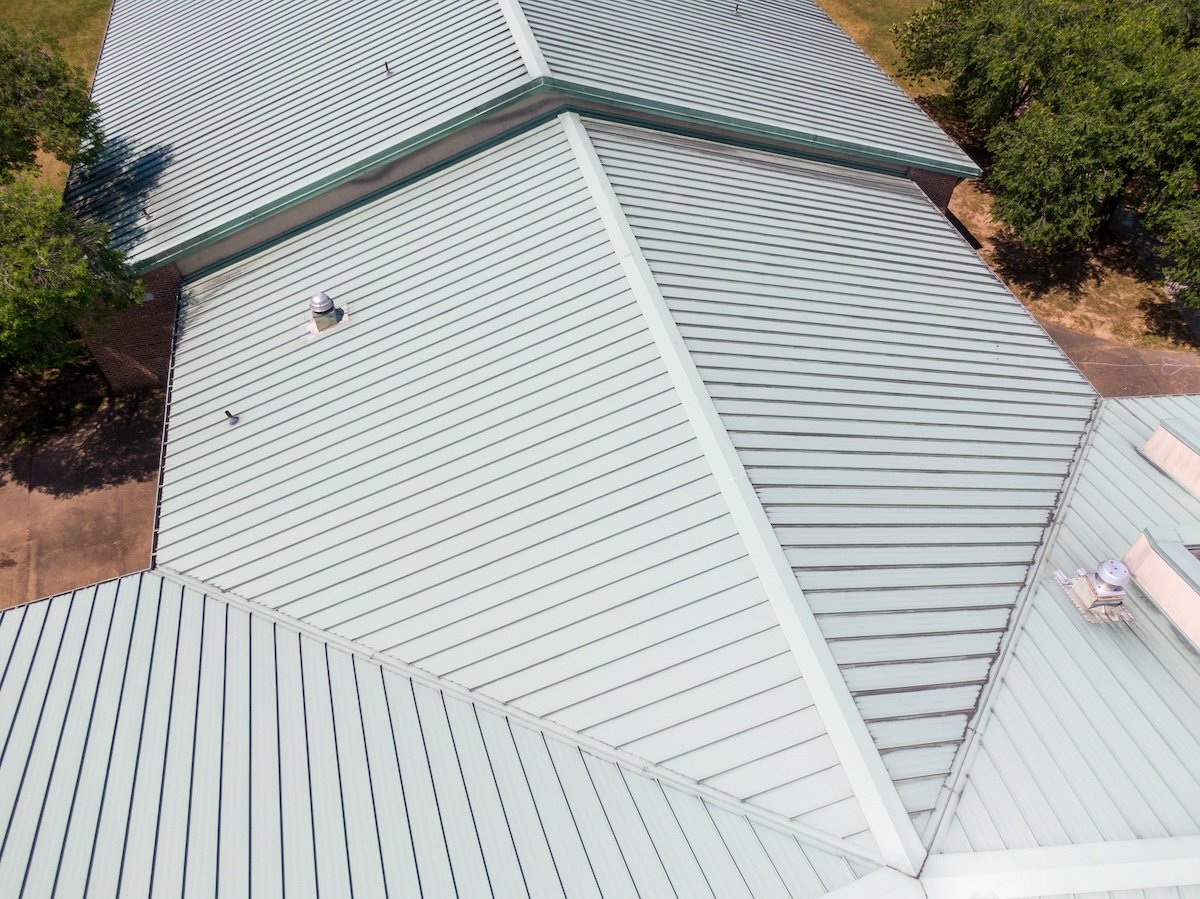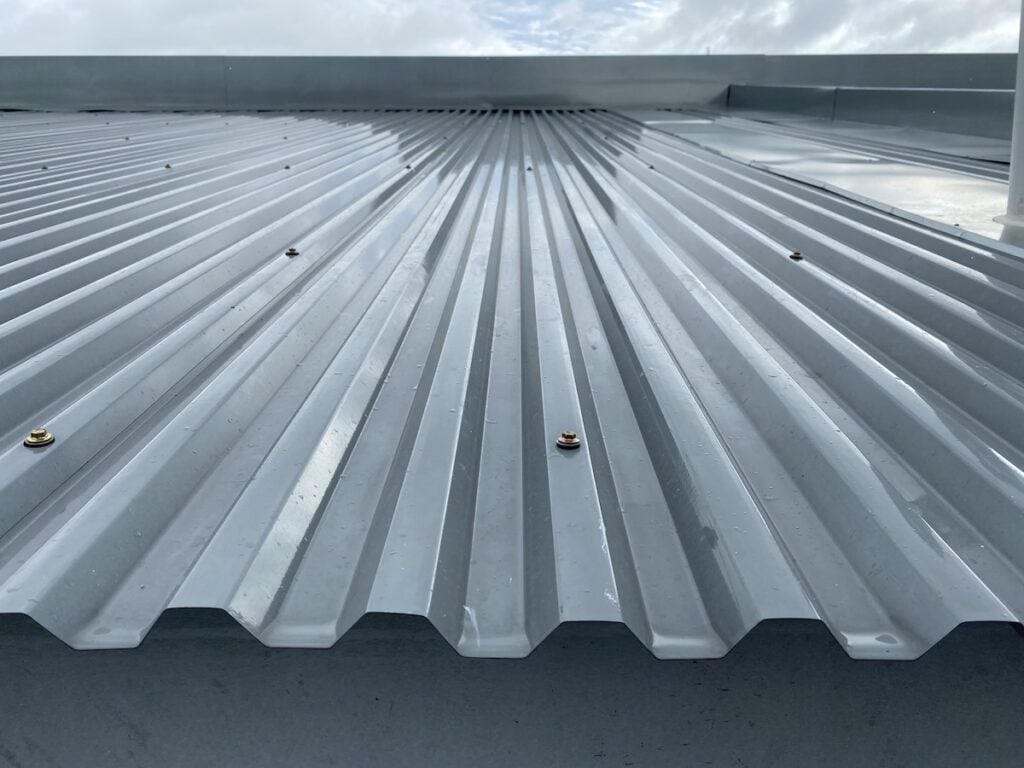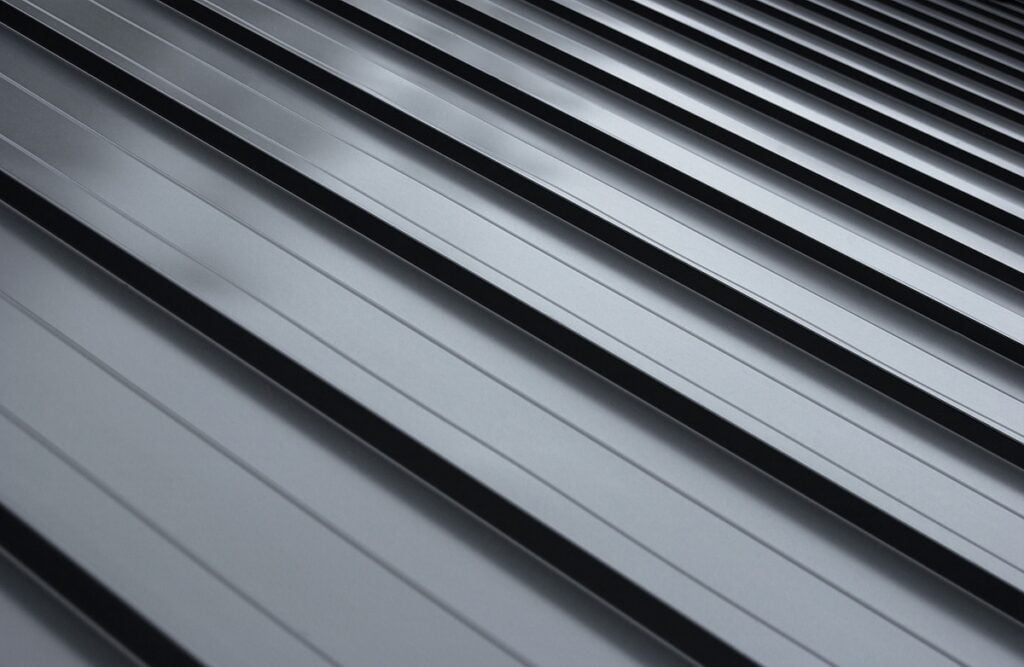5 Best Types of Metal Roofing (Materials, Styles, & More)
07/16/25
7 Min Read

Choosing from the many types of metal roofing available today is one of the smartest moves a homeowner can make when replacing or upgrading a roof. Metal roofing offers incredible durability, a long lifespan, and a sleek modern aesthetic that’s hard to beat. With advancements in both materials and design, it’s now easier than ever to find a metal roof that matches your style and performance needs.
In this guide, we’ll cover:
- Material options and performance: Understand the differences between steel, aluminum, and more.
- Design styles and panel types: From standing seam to stamped metal shingles.
- What’s trending now: Including a cutting-edge metal shingle CTA Exteriors is currently testing.
⭐️ Why Homeowners Are Making the Switch to Metal Roofing
Long-Term Value and Durability
Metal roofs are known for their strength and resistance to harsh weather. They can withstand hail, wind, fire, and even falling branches better than traditional asphalt shingles. When properly installed, a metal roof can last 40–70 years, compared to 15–30 years for a standard shingle roof.
Lower Maintenance Requirements
Metal roofing is virtually maintenance-free. It doesn’t warp, crack, or rot, and it’s far less prone to algae or moss growth. This means fewer roof repair costs over the life of your home. Plus, most types of metal roofing shed snow and rain efficiently, helping reduce the risk of water damage or ice dam formation.
Enhanced Energy Efficiency
Thanks to their reflective properties, metal roofs help reduce heat absorption and lower cooling costs during summer. Many options also qualify for energy tax credits or local utility rebates, adding even more value to your investment.
✅ 5 Best Types of Metal Roofing for Residential Homes
Here are the top choices homeowners are loving for beauty, strength, and performance:

- Standing Seam Metal Roofing
This is a sleek, modern option that uses vertical metal panels with interlocking seams. It’s the most popular concealed fastener system, which hides all attachment points beneath the surface. CTA Exteriors prefers this method for residential roofs because it’s more secure, longer-lasting, and better at preventing leaks than systems with visible screws. - Metal Shingles (Including Timberline Timbersteel)
These mimic the look of traditional shingles or shake but offer the durability of metal. Timberline’s new Timbersteel shingles are an exciting innovation for homeowners who want upscale curb appeal with metal-grade performance. They combine deep texture, high wind resistance, and concealed fasteners in one premium package. - Corrugated Metal Panels
Often used in rural or rustic-style homes, these panels feature wavy ridges that add texture. They’re part of the exposed fastener category, where screws are visible on the surface. While many professional roofing contractors still install exposed systems, CTA Exteriors prioritizes concealed fastener options for their superior water resistance and cleaner look. - Ribbed or R-Panel Metal Roofing
These are industrial-style panels with wide ridges and flat spacing. They’re affordable and easy to install, and are often used in garages or workshops. While still considered part of the exposed fastener family, they can be upgraded to concealed fastening depending on the home’s design and homeowner preferences. - Metal Tiles and Stone-Coated Metal Roofing
These styles offer the aesthetic of clay tile or slate with the weight and performance benefits of metal. They’re ideal for homeowners looking for high-end architectural detail without sacrificing durability. Many modern systems now use hidden fastening to avoid the issues commonly seen with exposed fasteners.
🤔 Concealed vs. Exposed Fasteners: What’s the Difference?
Concealed Fastener Systems (CTA’s Preferred Method)
Concealed fastener systems, like standing seam and certain metal shingles, hide all screws and attachments beneath the panels. This results in a cleaner appearance and far better resistance to water infiltration. These systems are more secure over time because the fasteners aren’t exposed to sun, wind, and rain—which often cause wear and loosening.
CTA Exteriors strongly prefers these systems for residential applications because they simply last longer and offer better long-term protection.
Exposed Fastener Systems (Used by Many Others)

Exposed systems show the screws directly on the panel surface. They’re less expensive upfront and easier to install, but the fasteners are vulnerable to rust, UV damage, and thermal movement. Over time, this can lead to a damaged roof, roof leaks, and more frequent roof repair needs.
⚠️ Common Signs It’s Time to Upgrade to Metal
Frequent Repairs or Shingle Replacement
If you’re regularly patching a damaged roof or replacing missing shingles, a metal upgrade offers peace of mind. The durability of metal significantly reduces the risk of recurring problems.
Visible Roof Damage After Storms
After major weather events, asphalt roofs often show signs of wear like curling, cracking, or missing or damaged shingles. Metal options are far more resilient to high winds, hail, and heavy snow.
Rising Energy Bills
If your HVAC system is working overtime, it could be due to poor insulation and heat absorption from your current roof. Reflective metal roofs can significantly improve energy efficiency and indoor comfort.
✅ Benefits of Choosing Metal Over Traditional Roofing
- Fire and Weather Resistance: Metal won’t ignite when exposed to sparks or embers, making it a great choice for wildfire-prone areas. It also resists wind uplift and hail impact better than asphalt shingles.
- Style Variety: Modern metal roofing is available in many styles, colors, and finishes—far beyond the “barn roof” look of the past. Homeowners can now choose from textures that mimic wood shake, slate, tile, or architectural shingles while gaining the benefits of metal.
- Low Risk of Leaks and Structural Issues: Because concealed fasteners minimize penetration through the roofing surface, there’s far less chance of developing an emergency roof leak or water-related structural damage. This greatly reduces the risk of needing an emergency roof repair down the road.
📋 What To Do if You Notice Roof Trouble Before an Upgrade
- Monitor for Leaks and Water Stains: If you notice discoloration on your ceilings or walls, that could signal a leaking roof. Even if the leak seems minor, it’s worth inspecting immediately—especially before rain or snow hits again.
- Don’t Wait on Urgent Roof Repairs: Ignoring small problems can result in bigger, more expensive issues. If there’s visible roof damage or signs of failure, request a free inspection from CTA Exteriors. We can help determine whether a roof repair will suffice or if a full metal replacement is the better investment.
- Act Quickly in Emergencies: In cases where storms or fallen debris cause immediate problems, an emergency repair may be needed. CTA Exteriors is equipped to handle urgent roof repairs with temporary solutions like tarping, followed by high-quality permanent fixes—including metal system upgrades.

💪 The Future of Roofing Is Metal—And It Starts with the Right Team
With so many types of metal roofing now available—each offering different benefits in durability, style, and protection—there’s never been a better time to consider metal for your home. From classic standing seam panels to innovative products like Timberline Timbersteel shingles, you have options that match your taste and your long-term goals.
At CTA Exteriors, we specialize in premium metal roofing installations using high-quality concealed fastener systems that are built to last. Whether you’re exploring new materials or dealing with a damaged roof, we offer expert guidance, professional service, and roofing systems you can trust.
Ready to upgrade your home?
Contact CTA Exteriors today for a free estimate, and let’s find the perfect metal roof that combines style, strength, and lasting value.
